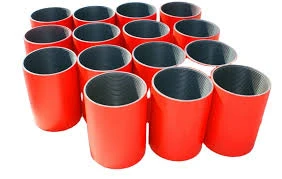- Afrikaans
- Albanian
- Amharic
- Arabic
- Armenian
- Azerbaijani
- Basque
- Belarusian
- Bengali
- Bosnian
- Bulgarian
- Catalan
- Cebuano
- Corsican
- Croatian
- Czech
- Danish
- Dutch
- English
- Esperanto
- Estonian
- Finnish
- French
- Frisian
- Galician
- Georgian
- German
- Greek
- Gujarati
- Haitian Creole
- hausa
- hawaiian
- Hebrew
- Hindi
- Miao
- Hungarian
- Icelandic
- igbo
- Indonesian
- irish
- Italian
- Japanese
- Javanese
- Kannada
- kazakh
- Khmer
- Rwandese
- Korean
- Kurdish
- Kyrgyz
- Lao
- Latin
- Latvian
- Lithuanian
- Luxembourgish
- Macedonian
- Malgashi
- Malay
- Malayalam
- Maltese
- Maori
- Marathi
- Mongolian
- Myanmar
- Nepali
- Norwegian
- Norwegian
- Occitan
- Pashto
- Persian
- Polish
- Portuguese
- Punjabi
- Romanian
- Russian
- Samoan
- Scottish Gaelic
- Serbian
- Sesotho
- Shona
- Sindhi
- Sinhala
- Slovak
- Slovenian
- Somali
- Spanish
- Sundanese
- Swahili
- Swedish
- Tagalog
- Tajik
- Tamil
- Tatar
- Telugu
- Thai
- Turkish
- Turkmen
- Ukrainian
- Urdu
- Uighur
- Uzbek
- Vietnamese
- Welsh
- Bantu
- Yiddish
- Yoruba
- Zulu
api casing sizes
Understanding API Casing Sizes A Comprehensive Overview
API casing sizes play a crucial role in the oil and gas industry, providing essential support to wellbore integrity and facilitating the safe extraction of hydrocarbons. The American Petroleum Institute (API) has established standardized casing dimensions to ensure uniformity and compatibility across various drilling operations. This article delves into the significance of API casing sizes, their classification, and factors influencing their selection in drilling projects.
What is API Casing?
API casing refers to the series of steel pipes used to line the wellbore during drilling operations. This casing provides structural integrity to the well, preventing collapse and ensuring that the borehole remains open while protecting groundwater and other formations from contamination. The API sets standardized specifications for casing sizes, which are crucial for ensuring consistency across various drilling companies and regions.
Classification of API Casing Sizes
API casing sizes are categorized based on their diameter and weight, which are defined in the API Specification 5CT. The casing sizes are typically expressed in inches for the outer diameter, with corresponding weights measured in pounds per foot (lb/ft). The most commonly used sizes include 4.5 inches, 5.5 inches, 7 inches, and 9.625 inches, among others, with varying wall thicknesses based on their intended applications.
API casing is classified into different groups depending on its function
1. Surface Casing The first casing run is typically surface casing, which provides stability and protects the freshwater aquifer from contamination. It is installed at shallow depths and must resist external pressures.
2. Intermediate Casing Installed after surface casing, intermediate casing is used in deeper sections of a well. It provides additional support and can withstand higher pressures encountered as drilling progresses through various geological formations.
3. Production Casing This casing is run into the wellbore to enable hydrocarbon production. It must be robust enough to protect the well during the extraction process and maintain mechanical integrity under varying pressures.
api casing sizes

4. Liner Casing Liner is a type of casing that does not reach the surface and is used to cover specific areas of the wellbore, typically in deeper applications for further stabilization.
Factors Influencing the Selection of API Casing Sizes
Several factors contribute to the selection of appropriate API casing sizes for a drilling project
- Well Depth Deeper wells require larger diameters and heavier casing to handle the increased pressure and stabilizing requirements. The depth of the well directly correlates with the casing size and specification needed.
- Geological Conditions The nature of the subsurface formations, including their pressure, temperature, and composition, influences the casing type. Challenging geological conditions such as shale formations or high-pressure zones may necessitate higher-grade casing materials.
- Operational Considerations Specific drilling practices, including the type of drilling fluid used and the methods of cementing, may also dictate casing size and specifications. Operators must ensure the selected casing can withstand the mechanical rigors of drilling and production operations.
- Regulatory Requirements Compliance with local and international regulations necessitates adherence to API standards and guidelines. Variations in regional legislation can lead to the selection of different casing sizes and specifications based on environmental and safety considerations.
Conclusion
API casing sizes are fundamental to the safe and efficient extraction of hydrocarbons from the earth. Understanding the classifications, characteristics, and factors influencing casing selection is vital for engineers and operators in the oil and gas industry. By adhering to API specifications, companies can ensure the integrity of their wells, safeguard the environment, and maximize production efficiency. As the industry continues to evolve, ongoing advancements in materials and engineering practices will further enhance the effectiveness of API casing systems, paving the way for safer drilling operations in the future.
-
Tubing Pup Joints: Essential Components for Oil and Gas OperationsNewsJul.10,2025
-
Pup Joints: Essential Components for Reliable Drilling OperationsNewsJul.10,2025
-
Pipe Couplings: Connecting Your World EfficientlyNewsJul.10,2025
-
Mastering Oilfield Operations with Quality Tubing and CasingNewsJul.10,2025
-
High-Quality Casing Couplings for Every NeedNewsJul.10,2025
-
Boost Your Drilling Efficiency with Premium Crossover Tools & Seating NipplesNewsJul.10,2025







